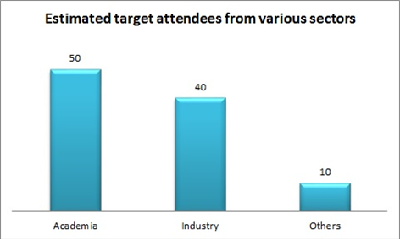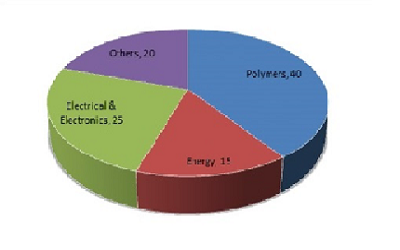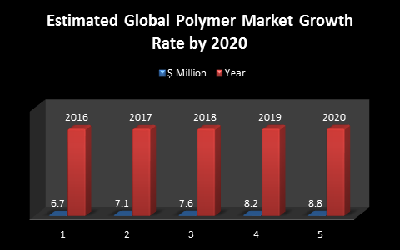Theme:
Polymer Science 2018
Conference Series LLC Ltd is proud to announce the 8th International conference on Polymer Science and Engineering, after the grand success of Polymer Science 2017, which is to be held during October 15-16, 2018 at Las Vegas, USA.
On the occasion of huge gathering, Organizing Committee invites participants from all over the globe to take part in this annual conference with the theme “Applications and Characterization of Polymers Vs Biopolymers: A Global Debate”. Polymer Science 2018 aims at blooming up with new innovative ideas and new technologies amongst the professionals, industrialists and students from research areas of Material Science, Polymer Science, Nanotechnology, Chemistry and Physics to share their recent innovations and applications in various fields and indulge in interactive discussions and technical sessions at the event. The Conference will also have a space for companies and/or institutions to present their services, products, innovations and research results.
Polymer Science 2018 is the exemplary meeting for the polymer researchers and students where you can discuss and learn new strategies that are happening in the world. And we assure you that, Polymer Science 2018 will be the optimum place to meet the Eminent Researchers of Polymer Science and Las Vegas is the populous tourist place where you can give your family a wonderful tourism experience.
This year the Organizing committee has planned of conducting the conference in an innovative way. As per the theme of Polymer Science 2018, apart from discussion about the ingenious ideas and advancement of new technologies, there will be a session of debate about the Polymer and Biopolymer where discussion will be done to know that which is the more environment friendly and should be more advanced in order to lead for the betterment of mankind and also environment.
Polymer Science 2018 Conference in USA:
|
Conference Name |
Place |
Date |
|---|---|---|
|
Polymer Science 2018 |
Las Vegas, Nevada, USA |
October 15-16, 2018 |
Polymer engineering is an engineering field that designs, analyses, or modifies polymer materials. A Polymer is a large molecule or a macro molecule which essentially is a combination of many sub units. The term polymer in Greek means ‘many parts’. Polymers are all created by the process of polymerization wherein their constituent elements called monomers, are reacted together to form polymer chains i.e 3-dimensional networks forming the polymer bonds. Materials of Engineering refers to selecting the correct materials for the application in which the engineered part is being used. This selection process includes choosing the material, paying attention to its specific type or grade based on the required properties.
A composite material (also called a composition material) is a material made from two or more constituent materials with significantly different physical or chemical properties that, when combined, produce a material with characteristics different from the individual components. The individual components remain separate and distinct within the finished structure. Polymers are common matrices (especially used for fibre reinforced plastics). Road surfaces are often made from asphalt concrete which uses bitumen as a matrix. Typically, most common polymer-based composite materials, including fibreglass, carbon fibre, and Kevlar, include at least two parts, the substrate and the resin. Polyester resin tends to have yellowish tint, and is suitable for most backyard projects. Its weaknesses are that it is UV sensitive and can tend to degrade over time, and thus generally is also coated to help preserve it. It is often used in the making of surfboards and for marine applications. Its hardener is a peroxide, often MEKP (methyl ethyl ketone peroxide). When the peroxide is mixed with the resin, it decomposes to generate free radicals, which initiate the curing reaction. Hardeners in these systems are commonly called catalysts, but since they do not re-appear unchanged at the end of the reaction, they do not fit the strictest chemical definition of a catalyst.
The main concerns for humans in the future will be energy resources, food, health, mobility & infrastructure and communication. The foremost challenges in the upcoming decades will be the population that is increasing gradually, the concentration of people in expansive urban centers, globalization and the expected change of climate. There is no doubt that polymers will play a key role in finding successful ways in handling these challenges. Polymers will be the material of the new millennium and the production of polymeric parts i.e. green, sustainable, energy-efficient, high quality, low-priced, etc. will assure the accessibility of the finest solutions round the globe. Synthetic polymers have since a long time played a relatively important role in present-day medicinal practice. Many devices in medicine and even some artificial organs are constructed with success from synthetic polymers and smart polymers for microfluidics and Self-healing and reprocessable. Polymer Systems have been employed in various industrial applications. Polymer Science can be applied to save energy and improve renewable energy technologies.
Polymer testing and consultancy for plastics, additives with applications including aerospace, automotive, electronics, packaging and medical devices. Polymers are a highly diverse class of materials which are available in all fields of engineering from avionics through biomedical applications, drug delivery system, biosensor devices, tissue engineering, cosmetics etc. and the improvement and usage of these depends on polymer applications and data obtained through rigorous testing. The applications of polymeric materials and their composites are still increasing rapidly due to their below average cost and ease of manufacture. When considering a polymer application, understanding how a material behaves over time allows us to assess its potential application and use. We can provide failure analysis of polymers and plastics and identify design faults or moulding issues. Our expertise can be applied to simple packaging films all the way through to advanced aerospace materials, and can be used as part of complex litigation cases. Polymeric materials tested include raw materials, polymer compounds, foams, structural adhesives and composites, fillers, fibres, films, membranes, emulsions, coatings, rubbers, sealing materials, adhesive resins, solvents, inks and pigments.
The field of Nanotechnology is one of the most popular areas for current research and development in basically all technical disciplines. This obviously includes Polymer Nanotechnology which includes microelectronics (which could now be referred to as nanomaterial). Other areas include polymer-based biomaterials, Nano medicine, Nano emulsion particles; fuel cell electrode polymer bound catalysts, layer-by-layer self-assembled polymer films, electrospun nanofabrication, imprint lithography, polymer blends and Nano composites. Phase separated polymer blends often achieve Nano scale phase dimensions; block copolymer domain morphology is usually at the Nano scale level; asymmetric membranes often have Nano scale void structure, mini emulsion particles In the large field of Nanotechnology, polymer matrix based Nano composites have become a prominent area of current research and development. Research of polymers and nanotechnology primarily focuses on efforts to design materials at a molecular level to achieve desirable properties and applications at a macroscopic level. With this broad focus, research ranges from fundamental scientific investigations of the interactions, properties and assembly of such molecular constituents to applied, engineering efforts that translate such fundamental information to futuristic technological advances.
Polymer physics is the branch of physics which deals with polymers, their fluctuations, mechanical properties, polymer structures and also with the kinetics. Polymer physics encloses the physical properties, structure and dynamics of polymers (both synthetic and naturally occurring) in various forms including semi-crystalline solids, glasses, elastomers, gels, melts, and solutions. Basic phenomena are of interest in accordance with the applications of polymers in technologies such as optoelectronics, advance photovoltaic systems, coatings, composites, medicine, food and pharmacy and tissue engineering. The statistical approach for polymer physics is based on an analogy between a polymer and either a Brownian motion, or other type of a random walk, the self-avoiding walk. The simplest possible polymer model is presented by the ideal chain, corresponding to a simple random walk. Experimental approaches for characterizing polymers are also common, using Polymer characterization methods, such as size exclusion chromatography, Viscometry, Dynamic light scattering, and Automatic Continuous Online Monitoring of Polymerization Reactions (ACOMP)[5][6] for determining the chemical, physical, and material properties of polymers. These experimental methods also helped the mathematical modeling of polymers and even for a better understanding of the properties of polymers.
Polymer chemistry is a chemistry subdiscipline that deals with the structures, chemical synthesis and properties of polymers, primarily synthetic polymers such as plastics and elastomers. Polymer chemistry is related to the broader field of polymer science, which also encompasses polymer physics and polymer engineering. Polymer chemistry is combining several specialized fields of expertise. It deals not only with the chemical synthesis, Polymer Structures and chemical properties of polymers which were esteemed by Hermann Staudinger as macromolecules but also covers other aspects of novel synthetic and polymerization methods, reactions and chemistry of polymers, properties and characterization of polymers, Synthesis and application of polymer bio conjugation and also polymer nanocomposites and architectures.
Polymer Degradation and Stability deals with the degradation reactions and their control which are a major preoccupation of practitioners of the many and diverse aspects of modern polymer technology. Deteriorative reactions occur during processing, when polymers are subjected to heat, oxygen and mechanical stress, and during the useful life of the materials when oxygen and sunlight are the most important degradative agencies. In more specialised applications, degradation may be induced by high energy radiation, ozone, atmospheric pollutants, mechanical stress, biological action, hydrolysis and many other influences. The mechanisms of these reactions and stabilisation processes must be understood if the technology and application of polymers are to continue to advance.
Polymers used in biotechnology and medicine as macromolecules that undergo fast and reversible changes from hydrophilic to hydrophobic microstructure triggered by small changes in their environments. These microscopic changes are apparent at the macroscopic level as precipitate formation in solutions of smart polymers or changes in the wettability of a surface to which a smart polymer is grafted. The changes are reversible, and the system returns to its initial state when the trigger is removed.
Polymers application is represented in all areas of human activity and everyday life. Therefore it is important to know their impact on human health. Polymers are mostly used as wrapping materials in construction industry. The main disadvantage of plasticmaterials is their variable transmission for light, gases and steam, as well as softening in high temperatures. Knowledge of kinds and possible harmful effects on human health is imperative in the choice and use of certain types of polymers. Special attention must be taken in food industry.
The use of renewable resources provides an incentive to extend nonrenewable petrochemical supplies. The agriculture industry produces sufficient supplies of some agricultural products that could be used as renewable sources for polymer feed stocks, either through direct use or indirectly as carbon sources to drive fermentation processes. Biodegradability is an additional benefit of renewable sources of polymers. Any polymer synthesized by a biological system is inherently biodegradable. Biocompatibility is a potential benefit in some cases. Biopolymers are polymeric biomolecules polymers that are produced by living organisms. Since they are polymers, biopolymers contain monomeric units that are covalently bonded to form larger structures. There are three main classes of biopolymers, classified according to the monomeric units used and the structure of the biopolymer formed: polynucleotides (RNA and DNA), which are long polymers composed of 13 or more nucleotide monomers; polypeptides, which are short polymers of amino acids; and polysaccharides, which are often linear bonded polymeric carbohydrate structures.
Theme: Applications and Characterization of Polymers Vs Biopolymers: A Global Debate
Summary:
Polymer Science 2018 is the podium to progress and outsource the knowledge in the new technological advancements in the field of Polymer Science and Engineering. This conference brings together professors, researchers, scientists, students in all the areas of Polymer Science and provides an international gathering for spreading the approved research. We are honored to invite you all to attend and register for the “8th International Conference on Polymer Science & Engineering (Polymer Science 2018)” which is scheduled for October 15-16, 2018 at Las Vegas, USA.
We cordially invite you to join us at the Polymer Science 2018, where you will be sure to have a meaningful experience with scholars from around the world. The organizing committee is gearing up for an exciting and informative conference program this year also which includes plenary lectures, symposia, workshops on a variety of topics, poster presentations and various programs for participants from all over the world. All members of the Polymer Science organizing committee look forward to meet you in Las Vegas, USA.
For more details please visit: https://polymerscience.conferenceseries.com/
Importance & Scope:
Polymer materials plays a key role in our lives because of its uniqueness in properties and extended application in industries, packaging, sports, medicine, perfumes and preservatives, plastics, fuels, toys etc. Plastics are also used in the manufacture of Prosthetic devices and surgical equipment. The diversity of use is growing day by day. The history of Biopolymer is not a long one. They are beginning to emerge as a result of needing to be more responsible in taking care of the world we live in. Various reasons are associated with the research and development of polymers. The use of biopolymers and composite polymers could noticeably increase as more durable versions are developed, and the cost to manufacture these bio-plastics and composites continues to go fall. Bio-plastics can replace conventional plastics in the field of their applications also and can be used in different sectors such as food packaging, plastic plates, cups, cutlery, plastic storage bags, storage containers or other plastic or composite material items you are buying and therefore can help in making environment sustainable.
Polymers have wide application in industries like aerospace, automobile etc. It also finds application in specific products like fishing rods, bicycle, sports equipment etc. Polymer engineering consists of many aspects of petrochemical industry and polymerization. Polymer engineering covers many aspects related to chemical engineering. Plastics are also used in the manufacture of Prosthetic devices and surgical equipment. The diversity of use is growing day by day. Many Polymer processing societies has been developed in recent years. The aim of these societies is to foster scientific understanding and technical innovation in polymer processing by providing a platform forum for the worldwide community of engineers and scientists in the field.
Why Las Vegas?
Las Vegas is the most populated city in the state of Naveda and 28th most populated city in the United States and the county seat of Clark County. The city anchors the Las Vegas Valley metropolitan area and is the largest city within the greater Mojave Desert. Las Vegas is an internationally renowned major resort city, known primarily for its shopping, fine dining, entertainment, and nightlife. The Las Vegas Valley as a whole serves as the leading financial, commercial, and cultural center for Nevada.
Las Vegas was founded as a city in 1905, when 110 acres of land adjacent to the Union Pacific Railroad tracks were auctioned in what would become the downtown area. In 1911, Las Vegas was incorporated as a city. At the close of the 20th century, it was the most populated American city founded within that century.
The city is an international hub for finance, commerce, technology, telecommunications, and transportation. McCarran International Airport is the primary commercial airport serving the Las Vegas Valley, a major metropolitan area in the U.S. state of Nevada. Las Vegas when viewed by the Astronauts, the Vegas strip is reputed to be the brightest spot on Earth due to the concentration of lights on its hotels and casinos. The city is home to several museums, including the Neon Museum (the location for many of the historical signs from Las Vegas's mid-20th century heyday), The Mob Museum, the Las Vegas Natural History Museum, the DISCOVERY Children's Museum, the Nevada State Museum and the Old Las Vegas Mormon State Historic Park.
Las Vegas is a spectacular city, incomparable to any other. Everything that you would expect from a world-class metropolis and more is right here for your travel pleasure.
Why to attend?
International Conference on Polymer Science and Engineering -2018 which is going to be the biggest conference dedicated to polymer science professionals providing a premier technical forum for reporting and learning about the latest new generation technologies developed during the course of time along with discussing their applications. Events include hot topics presentations from all over the world and professional networking with industries, leading working groups and panels.
Meet your Objective Business sector with individuals from and around the globe concentrated on finding out about Polymer Science and Engineering, this is the best chance to achieve the biggest collection of members from everywhere throughout the World. Conduct shows, disperse data, meet with current, make a sprinkle with another product offering, and get name acknowledgment at this occasion. Widely acclaimed speakers, the latest methods, strategies, and the most up to date overhauls in Polymer science and Engineering are signs of this meeting.
Major Polymer Science Associations around the Globe:
- American Chemical Society (Division of Polymer Chemistry)
- American Physical Society Division of Polymer Physics (APS DPOLY)
- Telford Polymer Association
- Polymer Coatings and Surfacing Institute
- Federation of Societies for Coatings Technology
- National Paint & Coatings Association
- Polymer Division of the Royal Australian Chemical Institute (RACI Polymer Division)
- The Polymer Society, UK
- American Plastics Council
- Association of Plastics Manufacturers in Europe
- European Committee of Machinery Manufacturers for the Plastics and Rubber Industries
- European Council for Plasticisers & Intermediates
- Indian Rubber Manufacturers Research Association
- Institute of Materials, Minerals and Mining
- Malaysian Plastics Manufacturers Association
- Performance Textiles Association
- The Polymer Society of Korea
- Polymer Machinery Manufacturers & Distributors Association (UK)
- Plastindustrieforbundet (Norway)
- Society of Plastics Engineers (USA)
- Society of the Plastics Industry (USA)
- European Polymer Dispersion and Latex Association
- British Plastics Federation
- International Association of Nanotechnology
- Royal Society of Chemistry
- International Cast Polymer Alliance
- Polish Chemical Society
- Danish Chemical Society
- Society of Chemical Industry
- American Coatings Association
- Association of Greek Chemists
- Italian Chemical Society
- Belgian Polymer Group (BPG)
- Brazilian Polymer Association
- European Council for Plasticizers and Intermediates
- European Polymer Federation
- Polymer Machinery Manufacturers and Distributors Association, UK
- Faraday Society
- The society for Polymer Science, India
- The society for Polymer Science, Japan
- Swedish Chemical Society
- Norwegian Chemical Society
- Royal Netherlands Chemical Society
- Hungarian Chemical Society
Target Attendees
- Eminent Scientists of Polymer Science & Engineering
- Polymer Professors
- Research fellows
- Students
- Directors of Polymer companies
- Chemical Engineers
- Polymer Associations

Glance at Market of Polymer Science
The plastics industry shapes the world we live in today whether it is industrial, technological or commodities used on a regular basis. A recent research has been carried out which covered a wide spectrum of plastics including materials, additives, processes, applications, and inter materials. Polymers, resins, coatings, films and composites are major areas of the plastics market covered. Quality market analysis, forecasts and trends determined from key market drivers help shape the future of the plastics industry. In-depth company profiles and patent analysis will help understand the emerging technologies and applications by key market players and stakeholders.
The global reinforced plastic composite market will grow from 14.8 billion pounds to about 17.6 billion pounds by 2020, with a compound annual growth rate (CAGR) of 3.5% for the period of 2015-2020.The global market for cast polymers reached 209.7 million square meters in 2014.This market will grow at a compound annual growth rate (CAGR) of 9.5% to reach 361.5 million square meters in 2020 from 229.2 million square meters in 2015 for the period 2015-2020. Global consumption of fluoro polymers amounted to 702.7 million lbs. in 2014 and is projected to total 740.4 million lbs. in 2015. The market is expected to grow during the period 2015 to 2020 at a compound annual growth rate (CAGR) of 5.5% to reach 969.1 million lbs. in 2020.The U.S. medical plastics market totaled nearly 4.4 billion pounds in 2014. This market should reach nearly 4.6 billion pounds in 2015 and 5.8 billion pounds by 2020 increasing at a compound annual growth rate (CAGR) of 4.8% between 2015 and 2020.The global market for glass fiber reinforced plastics will grow from $31.4 billion in 2014 to nearly $44.4 billion by 2019 at a compound annual growth rate (CAGR) of 7.1% between 2014 and 2019.The overall U.S. market for polymeric flexible hose and tubing materials was over 1.0 billion pounds in 2015 and should reach 1.1 billion pounds in 2020 at a five-year compound annual growth rate (CAGR) of 2.4%.The global market for thermoformed plastics reached nearly 8.0 billion pounds in 2015. The market is expected to reach 10.2 billion pounds by 2021 from nearly 8.3 billion pounds in 2016, increasing at a compound annual growth rate (CAGR) of 4.3% from 2016 to 2021.The global market for plastics additives was valued at $48.2 billion in 2015. This market is estimated to grow from nearly $50.6 billion in 2016 to $64.6 billion by 2021 with a compound annual growth rate (CAGR) of 5.0 % for the period of 2016-2021.The U.S market for polymeric foam was nearly 7.9 billion pounds in 2014. This market is predicted to reach nearly 8.1 billion pounds in 2015 and nearly 9.3 billion pounds in 2020, with a compound annual growth rate (CAGR) of 2.8%.The global engineering resin and polymer alloy/blend market reached 24.1 billion pounds in 2014. The market is projected to increase to over 25.2 billion pounds by 2015 and nearly 31.4 billion pounds in 2020, with a compound annual growth rate of 4.5%.
Global level applications of Polymers in Various Industries:

Estimated Global Polymer Market Growth Rate by 2020:
The Global High Performance Polymers Market is poised to grow at a CAGR of around 6.5% in the next 3 years to reach approximately $8.8 billion by 2020. The study focuses on market trends, leading players, supply chain trends, technological innovations, key developments, and future strategies. The report provides comprehensive market analysis across four major geographies such as North America, Europe, Asia Pacific and Other parts of the world

Conference Highlights
- Polymer Material Science and Engineering
- Composite Polymeric Materials
- Polymer Science – The Next Generation
- Applications of Polymers
- Polymer Nanotechnology
- Polymer Degradation and Stabilization
- Polymers in Biotechnology, Medicine and Health
- Renewable Resources and Biopolymers
- Brand Owners and Retailers perspectives
- Polymer Physics
- Polymer Chemistry
To share your views and research, please click here to register for the Conference.
To Collaborate Scientific Professionals around the World
| Conference Date | October 15-16, 2018 | ||
| Sponsors & Exhibitors |
|
||
| Speaker Opportunity Closed | Day 1 | Day 2 | |
| Poster Opportunity Closed | Click Here to View | ||
Useful Links
Special Issues
All accepted abstracts will be published in respective Our International Journals.
Abstracts will be provided with Digital Object Identifier by






